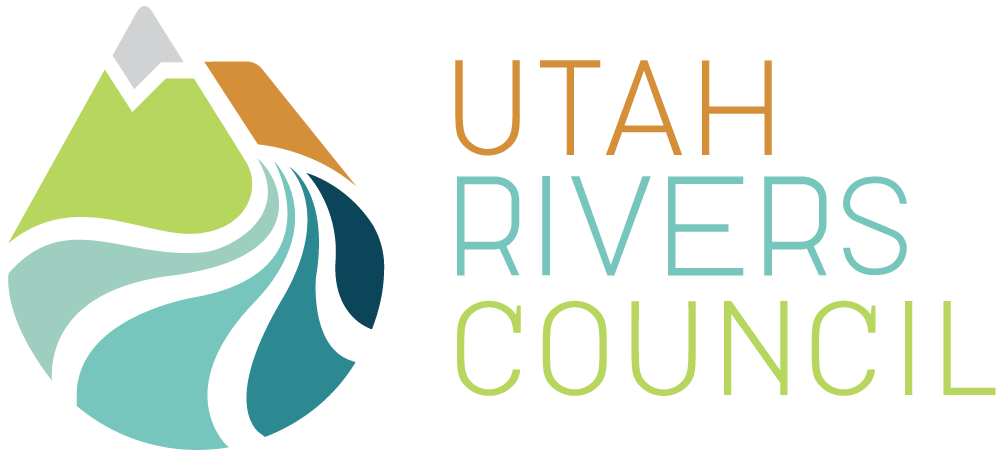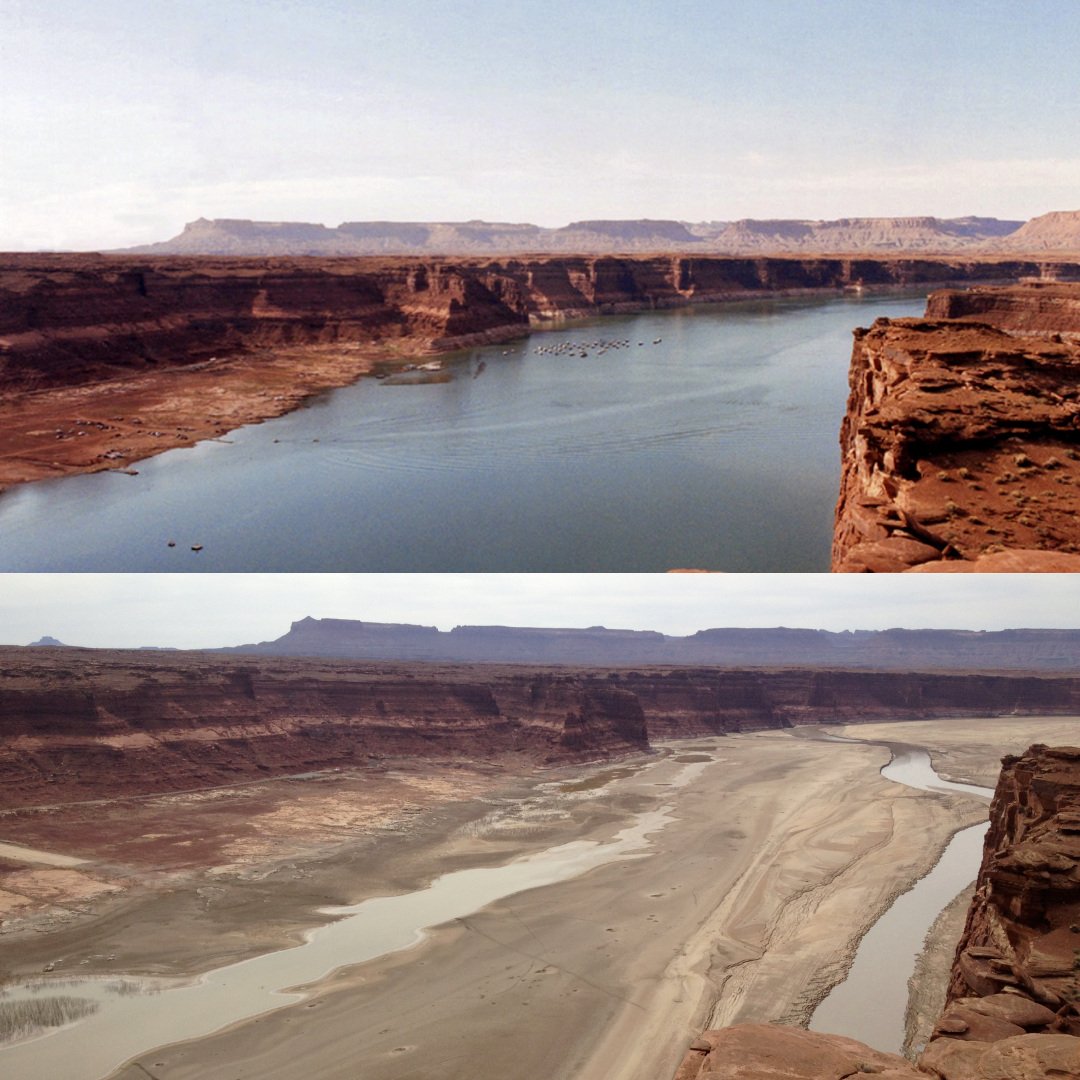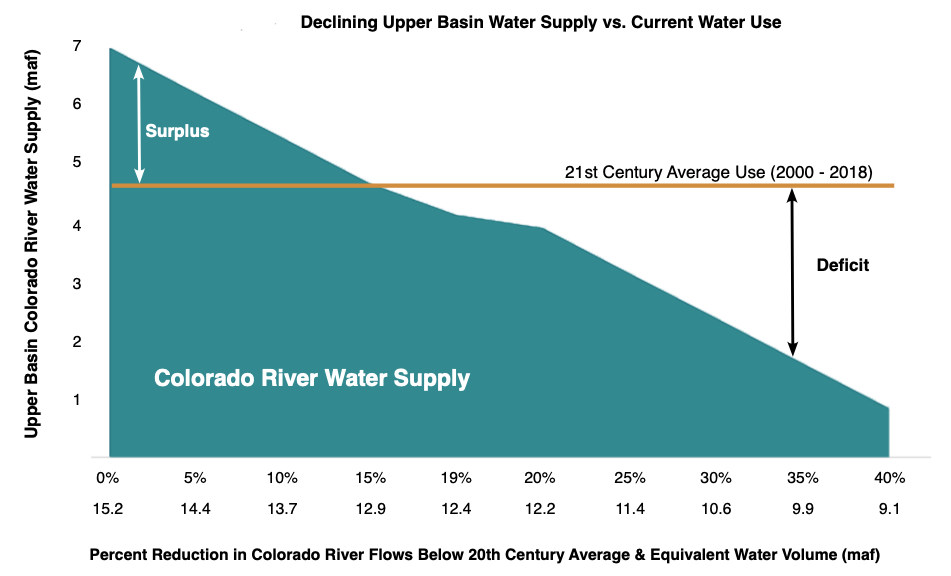New Report: Upper Basin States Overusing Colorado River Water
A groundbreaking new research report demonstrates that our changing climate has resulted in a 19% decline in Colorado River flows in the last two decades. The report also shows that three of the four Upper Basin states (Utah, Colorado and New Mexico) are overusing their rights to Colorado River water and have not reduced their use in the face of a declining water supply.
The report, A Future on Borrowed Time, is the first of its kind. It is the product of a full year of careful research led by the Utah Rivers Council with input from water experts across the American West. The results demand action: it is time to get serious.
If these deficits continue, the Lower Basin states of Arizona, California, Nevada alongside Mexico have the right to force the Upper Basin states to cut their use of Colorado River water. The report also demonstrates that water leaders proposing additional diversions are jeopardizing the water supplies for both cities and farmers in their own states.
“There’s some antiquated leadership in the Upper Basin from proponents of new water diversions who are jeopardizing the water rights of farmers and cities who have been using Colorado River water for decades” said Zach Frankel, executive director of the Utah Rivers Council, which produced the report. “Water leaders need to either stop denying that the Colorado River has dropped 20%, or they need to be replaced with professionals who embrace science and want to protect existing water users, instead of endangering them by proposing new water diversions amidst a declining supply.”
"The water crisis in the Colorado River Basin gets more dire everyday," said Jen Pelz, Wild Rivers Program Director at WildEarth Guardians. "This report makes plain that additional dams and diversions from the Colorado River are not only irresponsible, but put the entire basin and the communities that benefit from its water at risk of economic, environmental and cultural collapse. We need real and immediate commitments, especially from the Upper Basin states, to live within the river's means" said Pelz.
The report showcases the water deficits happening today among Utah, Colorado and New Mexico. These water deficits are based on the 21st Century average of water flows, which are 19% less than the 20th Century average on the Colorado River. Additional reductions in Colorado River water flows of 30% and 40% reductions in water volume demonstrate that serious water cuts may have to be made in the Upper Basin states, including all newly proposed water diversions.
Lifted straight from the report, this chart demonstrates the historic, present, and predicted flow of the Colorado River in million acre-feet, as well as the water deficit incurred by each of the four Upper Basin states if no action is taken to reduce water use.
"This report underscores what many officials are reluctant to say: The Upper Basin is already using more water than legally allowed” said Kyle Roerink, executive director of the Great Basin Water Network. “Any new dam or diversion for non-tribal entities would be a conflagration of the law and detrimental to the public interest. It's time for the Upper Basin to follow the lead of the Lower Basin and begin doing the hard work to get the Colorado River System back in balance" said Roerink.
While Upper Basin states have sought to increase their water use in the face of a declining water supply, the Lower Basin states and Mexico are cutting 613,000 acre-feet of water from their Colorado River water deliveries starting on January 1, 2022. Arizona, Nevada and California have also announced their intention to cut an additional 500,000 acre-feet on top of these water cuts to adapt to shrinking water supplies.
"The State of Baja California in Mexico depends heavily on Colorado River water and these water cuts mean less water for drinking, hygiene and other essential human needs” said Margarita Diaz, executive director of Proyecto Fronterizo de Educación Ambiental, the Tijuana Waterkeeper. "We need to create a plan to ensure our people have the essential water they need to survive our climate change crisis."
“Upper Basin water leaders have refused to accept forty years of science demonstrating that climate change is shrinking the Colorado River” said John Weisheit, Conservation Director Living Rivers, Colorado River Waterkeeper. “It’s time to stop pretending that shortages in the Upper Basin are not coming, they are here now.” said Weisheit.
The above graph shows the 2016 – 2018 water use for the four Upper Colorado River Basin states as a brown line. The 21st Century Colorado River flows were 19% less than the 20th Century Average of 15.2 million acre-feet. This means the Upper Basin is using more water than it is entitled to under compact and treaty obligations. Data taken from Bureau of Reclamation.
"The lower basin (Arizona, California and Nevada) uses more than 1 million acre-feet/year more than it is supposed to use. The fish representative of the health of the Colorado River have already either disappeared (Colorado Pikeminnow) or are no longer reproducing in the wild and are maintained by hatcheries (Razorback Sucker)," says Center for Biological Diversity Co-founder Robin Silver. "And Arizona's answer: continue growing at a non-sustainable rate, inadequate conservation efforts, and return to groundwater pumping which is also not sustainable."
This research was part of a year-long effort led by the Utah Rivers Council with input from water experts from across the American West. The report was funded in part by a grant from the Cultural Vision Fund.



